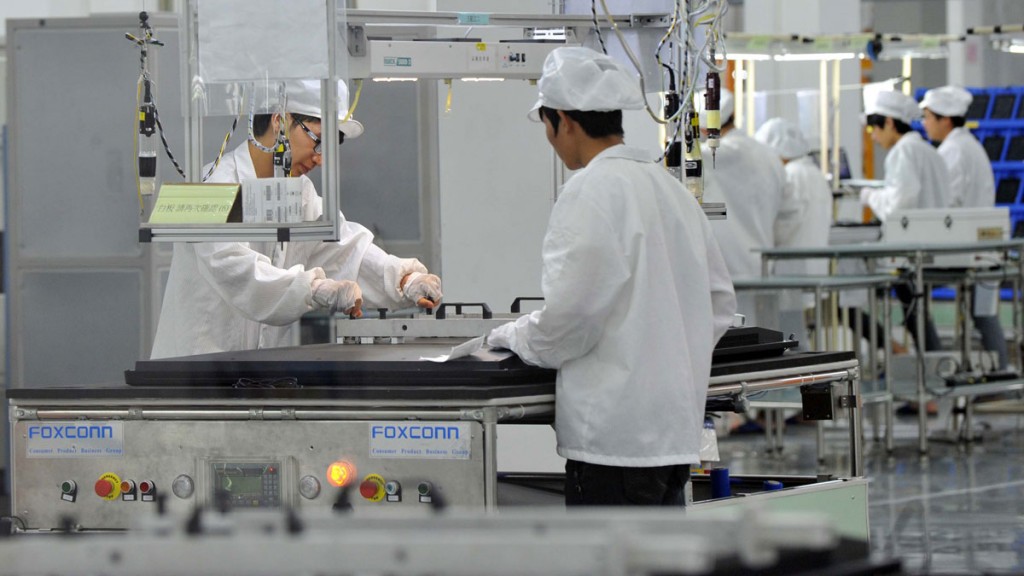
Last year pint-sized robot Nao went to work in branches of Japanese bank Mitsubishi UFJ. Waist-high Pepper began flogging Nestlé Nespresso machines in hundreds of shops across Japan. And last July, an eerily human-like “actroid” cheerfully started checking in guests at the Henn-na Hotel in Nagasaki.
It’s all very amusing – cute robots running around doing people’s jobs. It certainly doesn’t feel too threatening. But this week appeared to mark a change in our working relationship with robots. And you can be forgiven for feeling just a little bit uneasy.
Last weekend, the South China Morning Post reported that Foxconn, the Taiwanese supplier to Apple and Samsung, had cut 60,000 jobs in favour of automation. That’s more than half the workforce in one factory in Kunshan, in China’s Jiangsu province.
The head of the Kunshan government’s publicity department, Xu Yulian, explained the move with remarkable sang-froid: “The Foxconn factory has reduced its employee strength from 110,000 to 50,000, thanks to the introduction of robots. It has tasted success in reduction of labour costs. More companies are likely to follow suit” (emphasis mine).
There was more bad news for workers in Asia after German sportswear brand Adidas announced that it was building a cutting-edge “speed factory” in Ansbach, southern Germany, to make trainers for its home market. The move marks a U-turn in the company’s manufacturing strategy after the company ceased production in Germany in favour of Asia over two decades ago. But as Deutsche Welle notes, Adidas “has struggled with steadily rising wages across the continent, where it employs around a million people”.
That’s a sentiment shared by others, particularly in America where many companies are facing calls for higher minimum wages. Ahead of McDonald’s shareholder meeting yesterday, an event attended by a thousand protesting low-wage workers camped outside, former US boss of the fastfood chain Ed Rensi spelt out the temptation for companies all too clearly: “If you look at the robotic devices that are coming into the restaurant industry – it’s cheaper to buy a $35,000 robotic arm than it is to hire an employee who’s inefficient making $15 an hour bagging French fries.”
Current CEO Steve Easterbrook tried to assuage fears at the AGM by telling shareholders (and protesters outside) that even with a $15 an hour minimum wage, McDonald’s probably still wouldn’t replace workers with robots. “Ultimately we’re in the service business. We will always have an important human element.”
Yet, the fact that the question was even raised at the meeting shows that companies in Asia, Europe and America are at least thinking about it, if not already going down the robot route. As machines get ever more sophisticated, and the demands for wage rises and workers’ rights grow louder (see France this week), the temptation to switch to automation must surely increase.
Maybe that’s a little pessimistic. In a recebt MoneyWeek cover story, Eoin Treacy outlined a shared future for humans and machines: “don’t think of robots as replacements for humans – think of them as things that will help make us better at tackling many of the problems we face.”
Read the full article to find out how he thinks investors can profit from men and machines working together. If you’re not already a subscriber, sign up here.
But in the meantime, we can expect to see plenty more turmoil in the workplace.